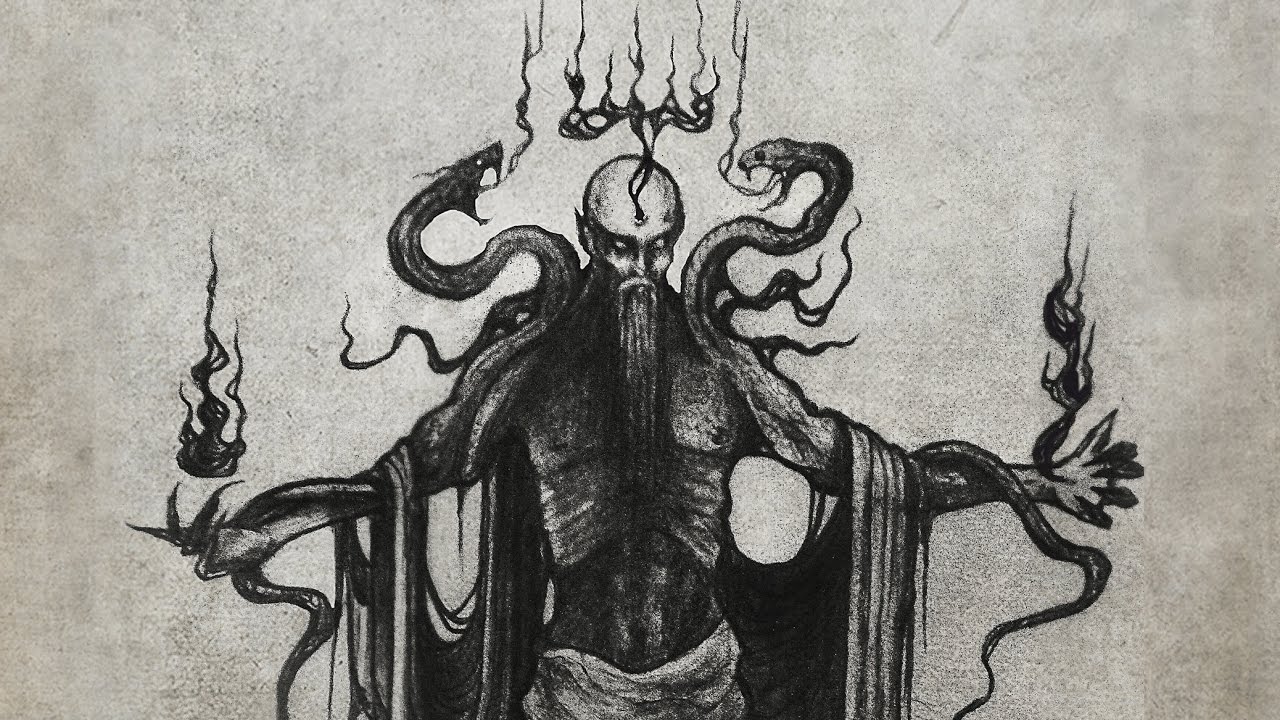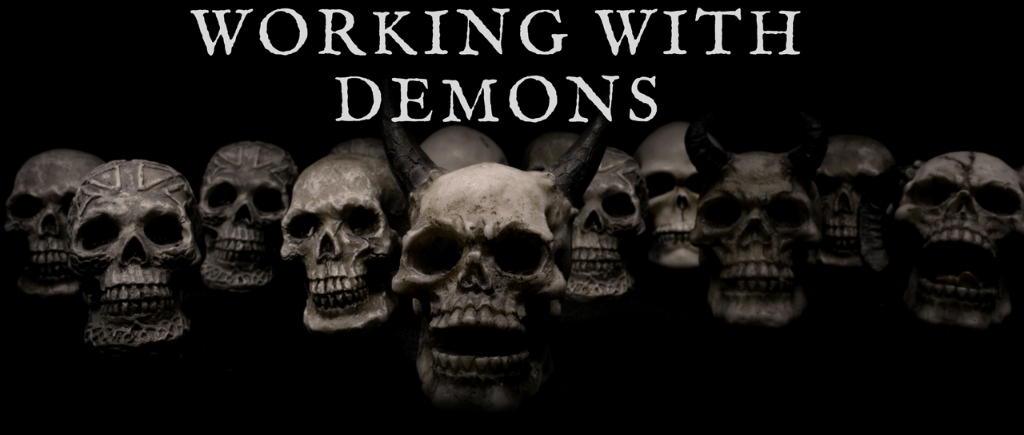Blog, Working With Demons
AZI DAHÃKA: The Three Headed Dragon
Azi Dahãka is a three-headed dragon of the Zoroastrian mythology who is considered the son of Angra Mainyu, the foe of Ahura Mazda. Azi Dahãka is popularly known as Zahhak or Zohhak. He is a figure of Persian mythology who was evident in ancient Iranian folklore and in texts from the Avesta.
The name ‘Azi’ is the old Iranian Avestan word for ‘dragon’ or ‘snake’.In middle Persia, the demon is known as ‘Dahag’ or Bevar-Asp , the latter meaning ( he who has 10,000 horses). Although the meaning of ‘Dahãka’ is quite unclear, speculation says it means “stinging”, “burning” (which is the Sanskrit word Dahana).
ORIGINS:
Azi Dahãka was made by Angra Mainyu and Autak from the unclean Khrafstra which are animals such as snakes, toads, scorpions, frogs and lizards. He is a dragon which depicts corruption often used on banners of war.
Avesta texts describe him as a three-headed, six-eyed, dragon-like monster with a thousand senses. Azi Dahãka is believed to have the power to manipulate storms and diseases. His wings are monstrous enough to block the sun from the sky. He once wandered the universe spreading terror and chaos until his creator Angra Mainyu, got angry and decided to destroy him.

Azi Dahãka has made several appearances in different forms as mentioned in literature.
Zoroastrian literature: He is one of the most mentioned in the earliest religious texts of Zoroastrianism. He was described as a monster with three mouths, six eyes, and three heads. He is cunning, strong and demonic but in other aspects, Aži Dahaka has human qualities and not a mere animal.
The name Dahag (Dahaka) is interpreted as “having ten (dah) sins”. His mother was Wadag (or Odag), a great sinner who committed incest with her son.
In the Avesta, it was stated that Aži Dahaka lived in the inaccessible fortress of Kuuirinta in the land of Baßri, where he worshipped the Yazatas Anahita, the divinity of the rivers, and Vayu, the divinity of the storm-wind. He asked these two Yazatas for power to depopulate the world but they refused.
The Shāhnāma:
In Ferdowsi’s poem, the Shāhnāmah, written sometime around 1000 AD and part of Iranian folklore, the legend’s story is retold with the main character given the name of Zahhāk. He changed from a supernatural monster into an evil human being.
In Arabia:
According to Ferdowsi, Azi Zahhāk was the son of a ruler named Mardash. He was handsome and clever but had a weak character, which made it possible for evil counsellors to influence him easily. Due to his weak character, Ahriman decided to deceive him.
When Zahhāk was young, Ahriman appeared to him as a flattering companion and convinced him to kill his father so he can become king and take over his territories. He advised him to dig a deep pit covered over with leaves in a place where Merdās often passed through. On that day, Mardash fell into the trap and was killed, and Zahhāk became the king.
After this incident, Ahriman disguised himself and came to Zahhāk as a marvellous cook. After he had served Zahhāk for many days with sumptuous feasts, Zahhāk decided to give Ahriman whatever he requested. Meanwhile, Ahriman merely asked to kiss Zahhāk on his two shoulders.
When he was permitted, he kissed him and as soon as his lips touched Zahhāk’s shoulders, he vanished. Immediately, two black snakes grew out of Zahhāk’s shoulders. These snakes could not be removed surgically, for as soon as one snake-head was cut off, another took its place. Ahriman appeared again to him as a doctor and told him that the only solution was to feed the snakes with human brains daily otherwise they will feast on his blood and destroy him. So Zahhak started killing young men and feeding their brains to the evil snakes.
Zahhak reign came to an end when he was caught by Fereydun, who struck him with his ox headed mace but didn’t kill him after being counselled by an angel. However, Zahhak was imprisoned in a cave underneath Mount Damavand, binding him with a lion’s pelt that is tied to great nails and fixed into the walls of the cavern. He is supposed to remain there until the end of the world. There is a prophecy that says the dragon will be free as part of the Zoroastrian apocalypse, to kill one-third of humanity before he is slain by Keresaspa.
CITATIONS:
- Wikipedia.com/Zahhak
- Britannica.com
- Image source: https://forum.becomealivinggod.com/t/zohak-azi-dahaka-must-read-wtf/32561/13


In fact we use the word Ezhdehhaa for dragon in current Iranian lang. Zh sounds smth between J and Z.
E sounds like E in Estate hh sounds like H in Honey and aa is like A in Arm.